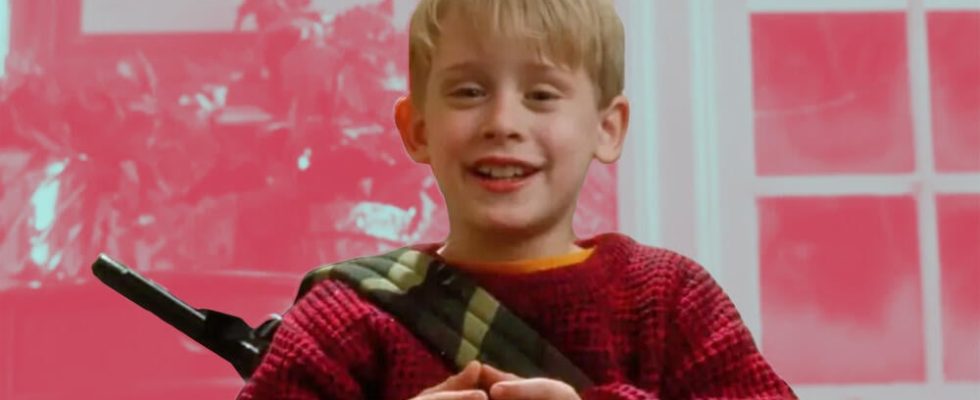In Home Alone, an 8-year-old (Macaulay Culkin) defends his home alone against two nefarious burglars (Joe Pesci and Daniel Stern). The story is straight out of a home invasion horror film. Why does it work so well as a family comedy? We’ve given a long-circulating theory on Reddit a name and broken down, step by step, how the entire film makes sense.
With the perspective theory, all the supposed mistakes in Home Alone make sense
The perspective theory: We see the story from the perspective of a playful, imaginative 8-year-old child. Everything that happens is exaggerated in Kevin’s imagination and served to us through his eyes: the burglars’ teeth sparkle, his traps are ingenious and every plan comes to fruition.
The theory is reinforced by the actual camera angle from which Home Alone is filmed. Cinematographer Julio Macat literally shot the film from a child’s perspective, with the camera positioned lower than normal. The set lighting was also brighter and special emphasis was placed on the ceiling – as children have to look up much more often than adults. Macat revealed this to Chicagomag.
5 things in Home Alone that finally make sense with perspective theory
Kevin’s Mean Family: Kevin’s parents and siblings aren’t particularly nice to him at the beginning of the film. His parents are annoyed, his big brother is disgusting. It’s Kevin’s own fault that they’ve forgotten him, but when they realize it, they’re immediately frantic with worry. From Kevin’s perspective, the family is ruthless and mean, but in reality they are stressed and will do anything for his well-being.
Kevin’s elaborate plan: How was Kevin able to come up with such an ingenious defense plan and build such sophisticated traps in such a short time? Maybe he didn’t. The traps we see are straight out of a Saw movie. In reality, they might have been a whole lot less elegant, but still enough to confuse and slow down burglars.
Disney
An elaborate trap by Kevin
The invincible burglars: The supposed mistake most often blamed is that burglars survive the deadly traps. At the very least, they would definitely have to go to the hospital with severe burns, broken bones and concussions in order to survive. Director Chris Columbus even said in an interview with Chicagomag that three or four times they thought the stuntmen hadn’t survived their stunts. Presumably the falls and bumps in the film reality simply weren’t as severe as Kevin perceived them.
No police: When the pizza delivery guy shows up at the door, Kevin puts on a gangster movie on TV and the delivery guy runs away, scared to death. The fact that he doesn’t call the police can be wonderfully explained with the perspective theory: He didn’t buy Kevin’s TV shooting act and Kevin only imagined the hasty escape.
The clean house: The McCallisters’ property must have been completely devastated after the break-ins and chases. However, at the end it shines with the same shine as at the beginning. As children, didn’t we all tune out the clutter in our rooms?
Disney
Like new: The McCallisters’ house after the night of the break-in
There is another supposed flaw that many blame on the film: Why couldn’t Kevin’s parents call him, but he could order pizza over the phone? Even this Home Alone mistake has a plausible explanation.
You can stream the Christmas classic with a subscription on Disney+ * and now enjoy it with completely new eyes. The perspective theory not only allows us to better ignore the inconsistencies. It also allows us to get even more involved in the wondrous children’s adventure that is at the center of the film.
*. If you purchase through these links or take out a subscription, we receive a commission. .
